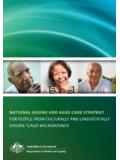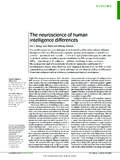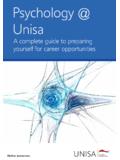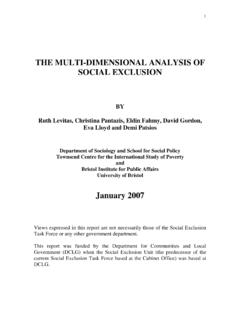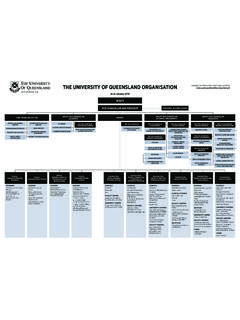Transcription of Fact Sheet 1: Introduction to Harmony in the …
1 Harmony in the workplace delivering the diversity dividend Fact Sheet 1: Introduction to Harmony in the Workplace Harmony in the Workplace is about working with 3. How do you maximise the value of cultural diversity Australian businesses and organisations to create a in your workplace and evaluate its effectiveness? culturally diverse and inclusive workforce. What is cultural diversity? What you'll learn from the factsheets While there are many definitions of culture, most have The following series of factsheets will help leaders, the same core elements. Culture' describes a system of managers, employees and trainers to: values and meanings shared by a group, which shape the behaviours expected in a particular situation and Discuss the cultural diversity in your organisation how behaviour is interpreted1. and maximise its value Encourage positive cultural diversity management Groups with an identifiable culture can be large or small. While culture' generally refers to a large group Remove myths surrounding cultural diversity of people, within a group there can be sub-cultures Discuss the legal parameters and frameworks that consisting of smaller groups with their own identities.
2 Employers and staff must be aware of to create a Of course, unique cultures and sub-cultures harmonious and inclusive workplace culture. can develop in any group sharing common characteristics such as age, gender, sexual Harmony in the workplace The factsheets highlight open and hidden racial and orientation, religion, education and so on. religious discrimination that can affect the ability Factsheet 1. Cultures of different groups often overlap of an employee from a diverse background to gain and one person can have many different employment and feel positive and connected in the cultural influences. also show how Culture is therefore a relative and your organisation contextual concept2. This is particularly true can benefit from regarding assumptions made about culture Australia's culturally and stereotypes, which are formed by a diverse workforce by generalised view of culture. making full use of the knowledge, experience and diverse skills that For the purposes of these factsheets, cultural workers of culturally diversity' refers to differences between and linguistically cultures which are associated with race, diverse (CALD) ethnicity, national or geographical origin.
3 Backgrounds will bring. Three core questions support each factsheet's content As mentioned, in the workplace, cultural diversity'. and, as an employer, should be considered in relation to or cultural identity' usually relate to ethnic or your staff: national background/origin. Culture' can also refer to organisational culture, which put simply means the way 1. How do you recognise cultural diversity and the we do things here'. Again, ethnic/national culture and diversity among your employees? organisational culture overlap. Your challenge, as an employer, is to ensure that your organisational culture 2. How do you talk about cultural diversity (if at all)? (and its sub-cultures) is inclusive of everyone, including CALD people. 2013 Federation of Ethnic Communities' Councils of Australia (FECCA) | | 02 6282 5755 | Harmony Harmony in the workplace delivering the diversity Factsheet 1. dividend in the workplace Terms often used to discuss culture and cultural relatively easy transition, many experience challenges in diversity in the workplace include: adjusting to life in a new country.
4 Ethnicity'. With these considerations in mind, our factsheets Background' present an overview of the key themes and issues How one identifies themself' regarding cultural diversity in Australian workplaces, including tips and suggestions on how to enhance the Cultural heritage'. benefits of cultural diversity in your organisation. Nationality'. Country of birth/origin' About the contributors We would like to acknowledge the contributions made Language do's and by participant organisations and the Harmony in the don'ts regarding Workplace Project Steering Committee who provided cultural diversity substantive insights and guided the development of is covered in more resources. The Project Steering Committee included: detail in Factsheet 6: Becoming Mr Pino Migliorino (FECCA Chair) - Project Steering Confident and Committee Chair Competent in Professor Santina Bertone (Swinburne University of Talking about Technology). Workplace Ms Katriina Tahka (Diversity Council of Australia).
5 Diversity. Ms Sandra Jeffery (Multicultural and Settlement Policy Branch, DIAC). Making it work: Dr Loucas Nicolaou (FECCA CEO). cultural awareness in Australia Ms Tanya von Ahlefeldt (FECCA Policy Officer) - Being culturally aware' means recognising that Project Coordinator and Lead Author. everyone has a cultural background influencing and impacting how they interpret the world and perceive FECCA is grateful for the knowledge and guidance others around them. So, being culturally aware or committed by the above people. culturally competent' doesn't mean being an expert on every culture or having an answer to every cultural question and issue. It means acknowledging that different perspectives and experiences exist as a result of everyone's different cultural background and life experiences, and that embracing this difference is the key to exploring cultural issues effectively and References appropriately. 1. Peoples, J and Bailey, G. 2012. Humanity: An Introduction to Being culturally aware and adaptable is everyone's Cultural Anthropology, Ninth Edition.
6 Belmont, CA: Wadsworth. responsibility. It's also in everyone's interest to gain 2. Hong, Y, Benet-Martinez, V, Chiu C, and Morris, M. 2003. an understanding of how Australian immigration Boundaries of Cultural Influence: Constructive Activation as a mechanisms work and how they impact on a person's Mechanism for Cultural Differences in Social Perception'. life experience. While some immigrants undergo a Journal of Cross-Cultural Psychology 34(4): 453-464. FECCA would like to acknowledge the generous assistance and critical review of this series of factsheets provided by the members of FECCA's Harmony in the Workplace Project Steering Committee. FECCA would also like to acknowledge the contributions of participant organisations that provided substantial insights and feedback, which have formed the basis of the themes and concepts we have explored. This project was funded by the Australian Government Department of Immigration and Citizenship (DIAC) through the Diversity and Social Cohesion Program.
7 For more information, please visit Harmony in the workplace delivering the diversity dividend Fact Sheet 2: The Australian Workforce (The Background). Australia has enjoyed a sustained period of economic workforce. Australia's post-war immigration boom had growth and productivity over the past decade, with its a significant and positive impact on the economy and highly educated, competitive and diverse workforce. reshaped the nature of Australia's workforce by making use of new skills and expanding our commercial and This factsheet will help employers and their staff to business interests. Removing restrictive immigration explore the cultural diversity in their organisation to policies in the 1970s further opened up Australia's strengthen productivity, innovation and growth in economy and provided new opportunities and markets. Australian workplaces. Today, with global financial challenges, increasing How diverse is Australia's workforce? labour demands and market competitiveness, Australia's greatest opportunity is in making the best Australia's workforce is astoundingly diverse, use of the skills and resources of our culturally diverse comprising people of different cultural backgrounds, workforce to benefit employers and staff.
8 Of course, religions, ages, genders, abilities and lifestyles. In 2011, one of our greatest challenges is to effectively manage Australia had a population of million people, and recognise cultural diversity to maximise its value 46% of which and fully enjoy its benefits. were either born overseas or had at Australia's ageing population Harmony in the workplace least one overseas- Factsheet 2. born parent1. This Current demographic trends show the incredible diversity growing significance of Australia's ageing is reflected population to our future workforce. The in Australia's Australian Bureau of Statistics projects workforce, with that between 2011 and 2020, the number 13% of workers of people aged 50 years and over will being born in non- increase by more than 22%4. English speaking (NES) countries While Australians are remaining in the and 23% born overseas2. So, we have a workforce with workforce for longer, low rates of population growth a vast range of individual experiences, capabilities and mean the number of younger workers entering the perspectives waiting to be used.
9 Labour market is falling5. So, competition for skilled staff in all industries and sectors is likely to intensify, leading Embracing a multicultural workforce to future acute labour and skills shortages. The need to make the best use of immigrant workers' skills is critical. Australia's workforce has been progressively shaped and enhanced by the contributions of people from The Australian workforce in the Asian Century culturally and linguistically diverse (CALD) backgrounds. In fact, population policy is now a key consideration in The commercial and business opportunities presented economic and employment policy in Australia3. to Australia in the context of the Asian Century are compelling. Three of Australia's five largest trading There's good reason for this. Within Australia's partners China, Japan and the Republic of Korea are economic and commercial history, strong evidence in Asia and, together with their regional neighbours, points to the effectiveness of a culturally diverse account for almost half of Australia's total international 2013 Federation of Ethnic Communities' Councils of Australia (FECCA) | | 02 6282 5755 | Harmony Harmony in the workplace delivering the diversity Factsheet 2.
10 Dividend in the workplace trade. It's estimated that over $275 billion will be and face discrimination, racism and intolerance. As injected into Australia's economy by forging closer an employer, adopting any of the effective diversity ties with our regional neighbours, among them the management strategies below will help to address economic giants, China and India6. these barriers and enable you to use and maximise the benefits of your diverse workforce: Australia has already benefitted substantially from its trade and business ties with Asian partners. The Implementing policies and practices to remove challenge now, in the context of the Asian Century, discrimination and workplace bullying is maintaining Providing cross-cultural awareness training these vital opportunities for all staff to enhance their economic links knowledge and expertise, including language and in a climate of communication skills increased global Supporting the national Racism.
